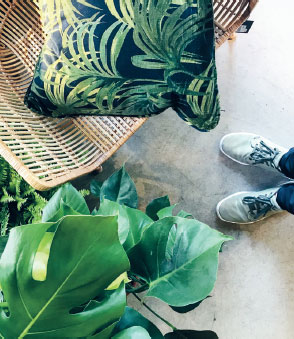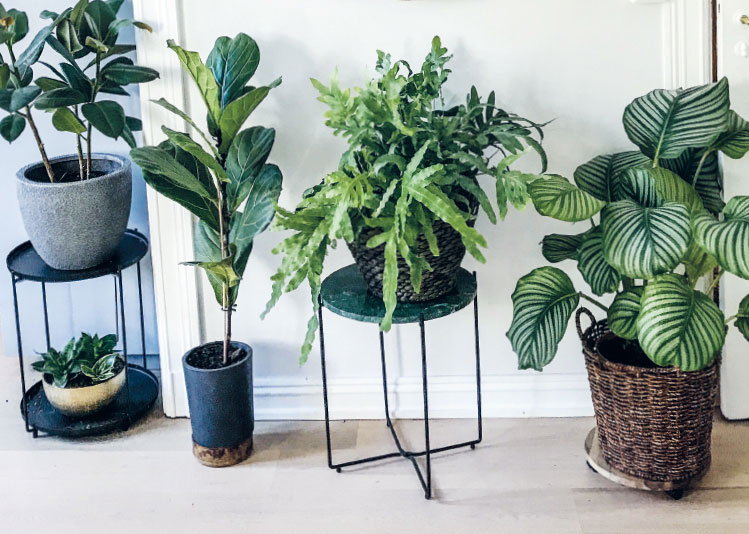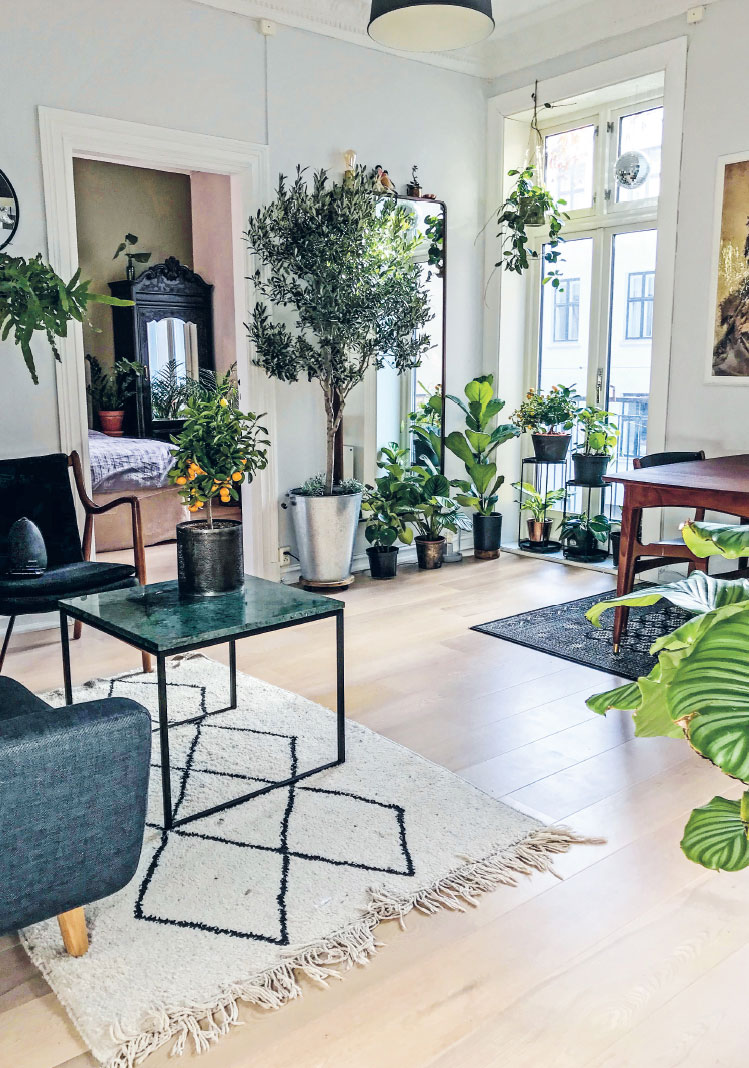

STYLING AND DECORATING WITH PLANTS
Nordic interior design is so pure, airy, light and simple that rooms can benefit from a few plants. Green elements in an otherwise austere interior create depth and contrast. Interior magazines feature articles on the sort of lush, green homes you’d like to walk into and stay for a while. Not surprisingly, plants have become an integral part of our interior spaces, in the same way as cushions, textiles and curtains – but with the added bonus that they bring life into the home.
YOUR OWN GREEN OASIS
Every time I walk into a lush, green home, I always think: the person who lives here is able to show that they care, both for people and for all other living things. Plants can make any home feel more personal and full of life – all it takes is some awareness of placing.
THE TRINITY
All good things come in threes, and that also applies to arranging plants. Try placing them in groups of three – for harmony, structure and interest. Put a larger plant at the back, a medium-sized one to one side and a smaller one at the front, in a triangular arrangement. It’s a grouping that can also include more than three plants at a time, but note that odd numbers usually work better than even numbers in combinations of this kind. You could also try experimenting with combinations of different greens and leaf textures to create a more vivid impression.
PLANTS ON THE TABLE – A SUSTAINABLE ALTERNATIVE
I like arranging several low-growing plants on a dish and putting it on my coffee table or dining table. At the risk of killing the romance for rose lovers, I do think plants are a more sustainable alternative to always having fresh-cut flowers in a vase. Both cacti and succulents can work just as well as attention-grabbers on the table, ideally in a small arrangement. You can also make a simple terrarium by putting plants inside a glass container.
HOUSEPLANTS AS NET CURTAINS
If you live in a densely populated area with neighbours opposite, plants can help to preserve your privacy. Place plants in and next to windows to create a green and smooth transition between indoor and outdoor spaces – while also ensuring that fewer people can see in.
PLANTS AS ROOM DIVIDERS
My partner’s flat is one big open space from the entrance through to the kitchen and living-room. In order to create distinct zones, he uses plants as dividers and to mark out areas. Larger plants work fine as room dividers – they can form a sort of half-hedge to create a room within a larger space. If your plants are not so tall, try putting them on pedestals or occasional tables to achieve much the same effect.
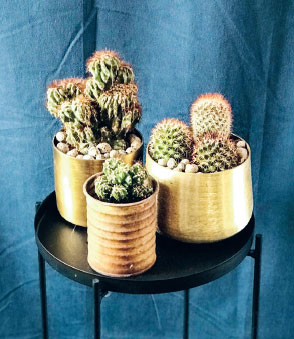
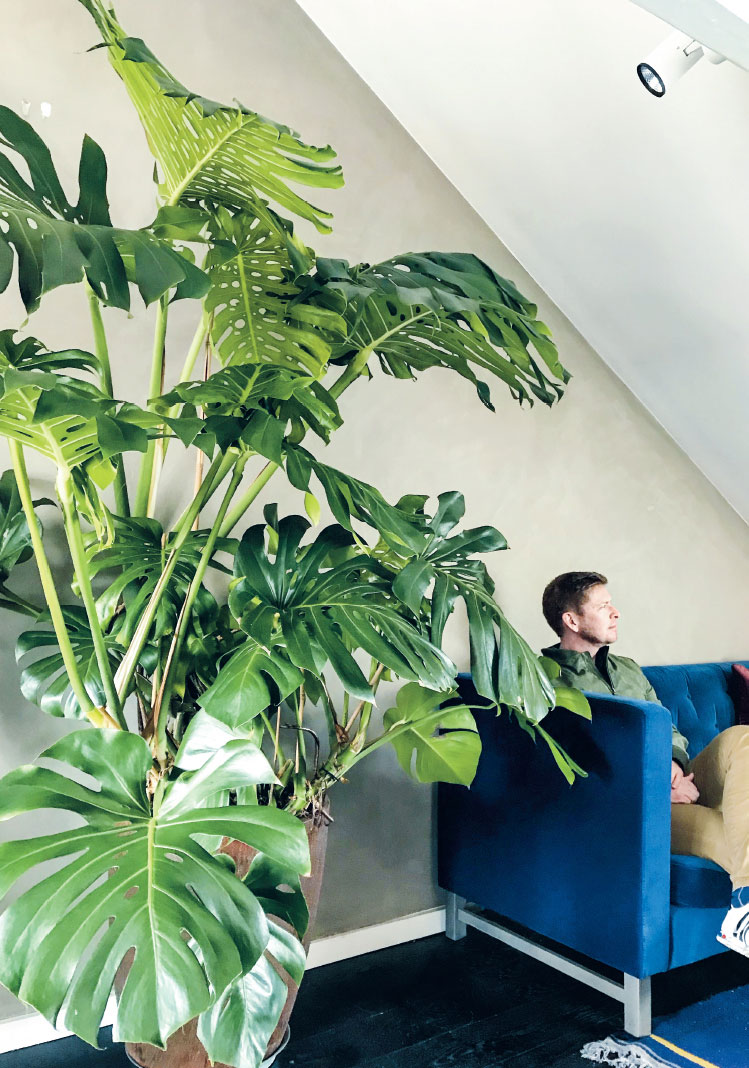
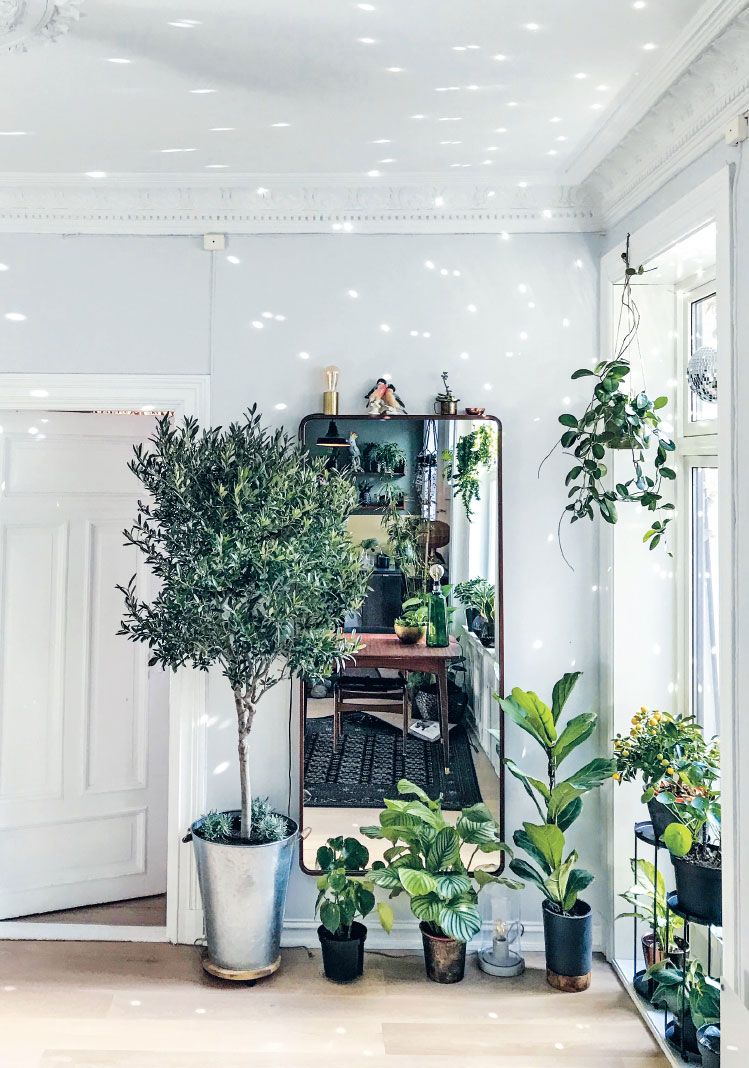
THE PLANT NOOK
In big, open spaces, it can be really nice to have a green plant nook. My partner Erik has created a peaceful oasis in his apartment by surrounding a corner chair with plants. Try it yourself, by putting a large green plant (or more) in a corner, perhaps next to a seat.
Maybe you have a low bench or an occasional table? You could place these next to the chair and arrange different-size plants on them at varying heights. Try some on the floor as well. If you turn your head, it can almost be like sitting out in a garden as your plants catch your gaze.
A green setting is the ideal place to sit and read a book or to contemplate. An extra benefit of putting plants near where you sit is that it’s easier to see when they need watering.
PLANTS HANGING HIGH UP
Hanging plants are possibly my favourites, and they can give any room a lift. Ivy (Hedera), waxplant (Hoya), golden pothos (Epipremnum aureum) and string of pearls (Curio rowleyanus, formerly known as Senecio rowleyanus) will all really benefit from being raised up in a hanging plant pot. They have trailing branches that make them ideal for suspending from the ceiling or in front of a window, for instance.
These days there are a lot of excellent pot-hangers available in various materials – macramé, basketwork, metal, ceramic. In my experience, I think it creates a more lively and harmonic impression to arrange several hanging plant pots in a row, of various sizes and at different heights. In smaller spaces and homes, you can free up valuable floor space by hanging plants.
THE WOW FACTOR
One single, large and luxuriantly green plant can be an eye-catcher in any room. A tree of a certain size, such as a big fiddle-leaf fig (Ficus lyrata), a robust Swiss cheese plant (Monstera deliciosa) or an over-sized bird of paradise plant (Strelitzia), is guaranteed to give the space the attention it deserves, whether it’s a large room or a spacious entrance hall.
Note: these are plants that take time to grow big, or cost a lot to buy as a mature specimen – so patience or a generous wallet (or piggy bank) may be useful resources.
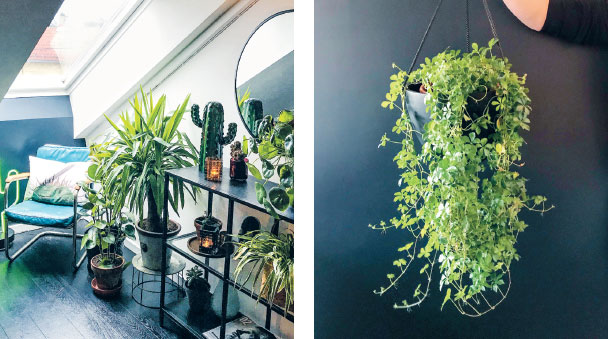
PLANT SHELVES
One or more plant shelves in your kitchen and living-room will instantly give your home a green and lush impression. You can find inspiration on Instagram by searching for the hashtag #plantshelfie.
In the kitchen, I like to combine edible and decorative houseplants. I enjoy having access to herbs that I use a lot in dishes, such as parsley, basil, coriander and thyme. I find that having these herbs close to hand makes me use them more. Herbs smell good – and they provide inspiration in my cooking.
Use your plant shelf to highlight items that you’re particularly fond of. I have my collection of hand-glazed ceramic animals – they’re a bit kitsch, but kind of fun to have among the green plants.
WALL PLANTS
Try buying pots that can be fastened to vertical surfaces, so that you can hang plants from the wall. Some ferns work really well here – and if you want to be particularly creative, you could try using different hanging plants to create a green wall. Golden pothos (Epipremnum aureum) is a good candidate.
Moss walls are commercially available in various sizes. These can be hung directly on the wall and are practically maintenance-free. I’ve also seen cactus walls – mixed, live cacti arranged in an exciting vertical display. In Barcelona, I saw an original cactus wall containing over 100 types to form a striking tapestry of silvery greens.
BRIGHTEN UP UNUSED CORNERS
Every home has an unused nook that has never really fitted in. But as long as it has some access to natural light, one or more plants can transform a neglected corner into something more interesting and alive. And if there’s no natural light available, you can always get a plant light.
Sunny, warm corners are perfect for sun-loving plants such as cacti and succulents. How about a sunny corner with a desert feel as a contrasting feature to lusher plants elsewhere?
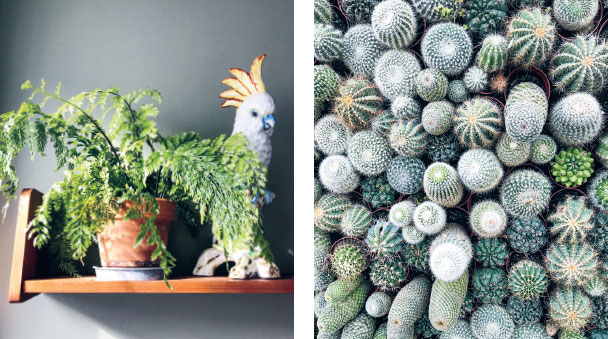
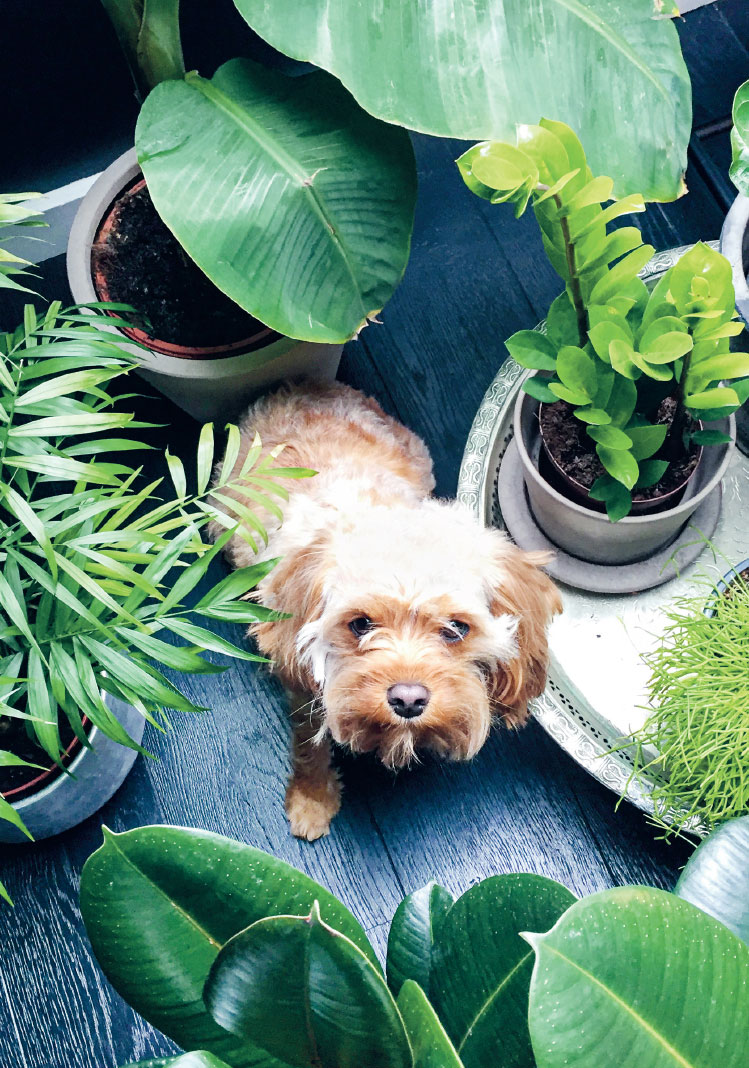
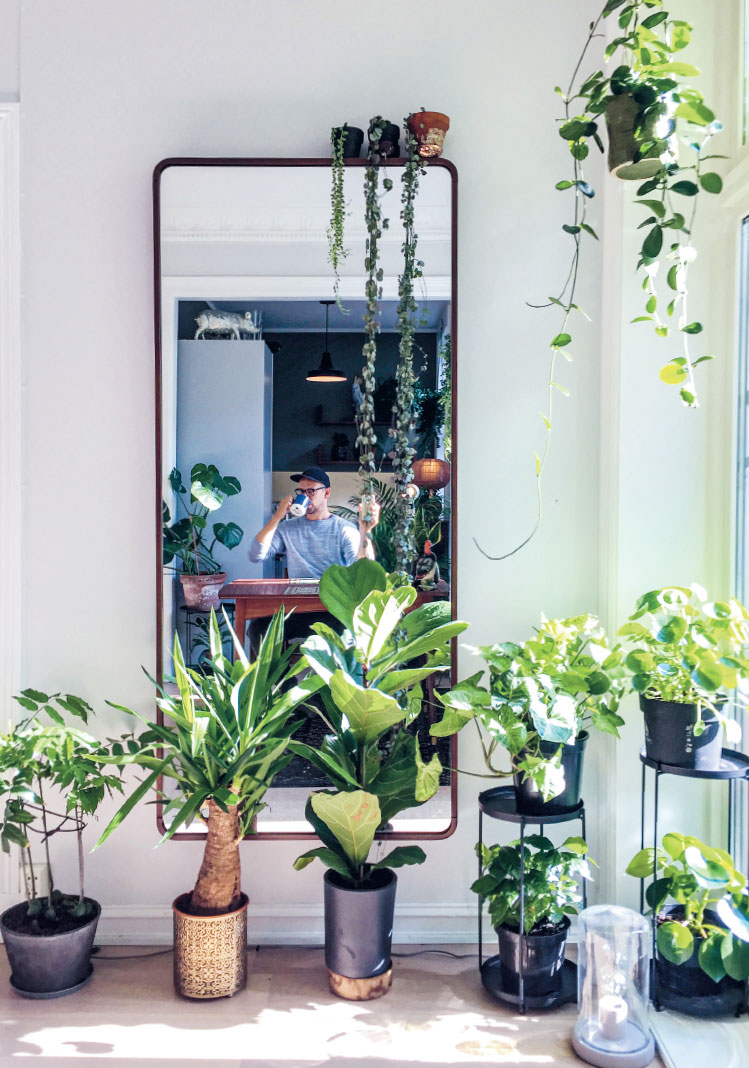
MIRRORS – MY FAVOURITE TIP
I have twice as many plants as I really have! Or at least, that’s how it looks – in my mirrors. An ingenious trick then is to use mirrors as part of your interior décor – especially if, like me, you live in a small space. Mirrors reflect light further into a room and make the space feel bigger. In particular, because they increase the amount of natural light, mirrors allow you to place plants further in from windows.
Mirrors of different shapes and sizes also help to create interesting dynamics in an interior space. I have a lot of mirrors of all shapes: square, rounded, completely round, and in various sizes as well.
POTS AND JARS
People often ask me where I get my pots. I tell them that I like to combine everything imaginable – new and secondhand, homemade and non-traditional containers, pots and jars. Check to see what you already have in your cupboards and storage spaces. Perhaps you’ll find an unused bowl that you can use as a pot holder?
I usually reuse these by drilling a hole in the bottom for drainage. You can easily do this yourself by sticking a piece of gaffer tape on the bottom and then carefully drilling a hole through it. A lot of towns and cities have shops run by charitable foundations and organizations that sell secondhand and recycled items. It can be exciting to go on a treasure hunt while contributing to sustainable recycling and a good cause at the same time.
POTS FROM SECONDHAND MARKETS
Local flea markets or neighbourhood car boot sales are other potential sources of treasures. Maybe you’ll find an old tin that would make a good container for some of your succulents? Or a rattan basket that could be lined with plastic and used as an attractive pot container? There are plenty of opportunities if you have a creative and imaginative vision – you’ll get a lot for your money and it’s good for the environment. When I’m away travelling, I like to visit markets and vintage stores. I often make impulse purchases that go on to bring me immense joy – and that are all mine! An old, green glass bowl from Burgundy, France, has served as a pot for one of my ferns, and an old wooden measuring jug that we found at a market in Portugal is doing a splendid job as a pot holder for a climbing plant. They now sit there as constant reminders of the great times we had on those trips.
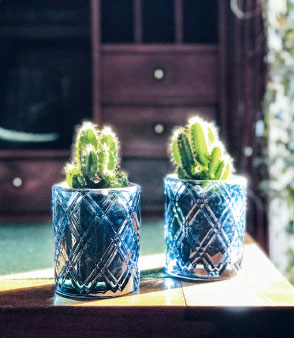
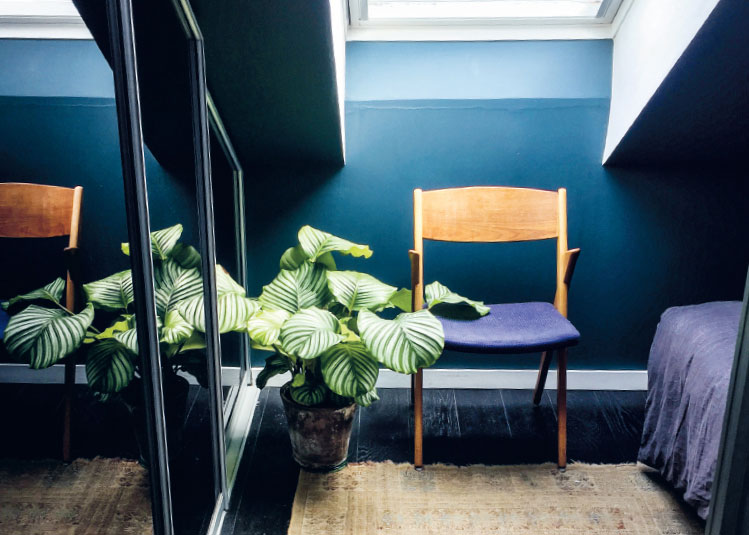
DARK WALLS MAKE YOUR PLANTS REALLY STAND OUT
A lot of people are scared that dark walls will make the room look gloomy, but my experience is the direct opposite – they create a warm atmosphere, and they work as a bold canvas that makes your plants stand out. Dark shades of grey, green and blue on a wall will only enhance the colour of the leaves and give depth to your green oasis.
TABLES, PEDESTALS AND STOOLS
Variation is the keyword. I consciously made use of a lot of different elements when I furnished my home with plants. I grouped several plants on small tables, put plants both on and underneath pedestals, or used unused stools to elevate and accentuate my plants. I think plants arranged at different heights look great. Getting them up off the floor and putting them on stools or occasional tables creates an airy, luxuriant and delicate impression.
A pedestal suggestion that’s a bit out of the ordinary – turn large unused jars upside-down and use them as stands for potted plants.
GREEN IDEAS FOR A MORE LUXURIANT HOME
Current interior trends are clearly characterized by natural and organic features.
As well as houseplants, there’s a whole lot of cool poster art that can bring a natural element into a room, with attractive, clean foliage motifs. How about hanging a nice picture of a lush monstera over the sofa?
The natural theme can be complemented by textiles in plant prints. An attractive cushion with a leaf motif can brighten up any armchair or sofa – and elegant wallpaper patterns can be used to enhance a luxuriant, tropical mood. A rear wall that gets very little daylight papered with a botanical design will definitely give the room an organic feel.
The more original your idea for accentuating your plants, the better it usually works. Try out some ideas to see what looks good!
